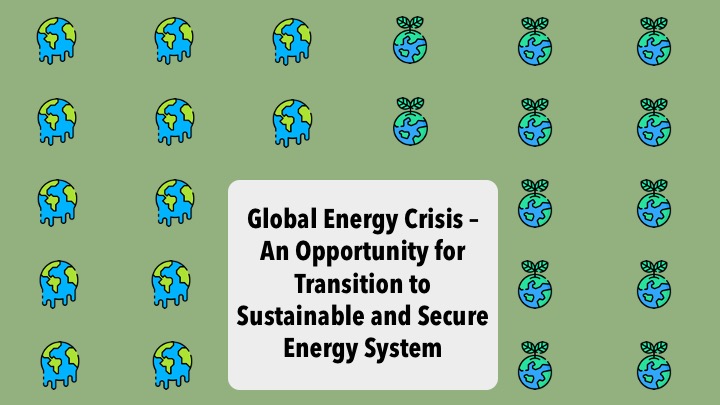
Global Energy Crisis – an opportunity for transition to Sustainable and secure Energy System
The International Energy Agency (IEA) recently published a report on the global energy outlook as part of its World Energy Outlook 2022.The report highlights the global energy crisis, which has been triggered by the conflict in Ukraine, and has resulted in significant price increases due to uncertainties about supply security and affordability. This comes at a time when energy markets are already tight following the COVID-19 rebound.
According to their “States Policies Scenario, 1900 – 2050,” the global demand for all fossil fuels is now exhibiting a peak or plateau for the first time.
In this scenario, coal use declines over the following few years, natural gas demand reaches a plateau by the end of the decade, and oil demand gradually declines through the middle of mid-2030s due to rising sales of electric vehicles (EVs). This indicates that from the mid-2020s to 2050, the global demand for fossil fuels will gradually decline. As a result, the proportion of fossil fuels in the global energy mix will fall from around 80% to just above 60% by 2050. Global CO2 emissions will gradually decline from a high of 37 billion tonnes per year in 2010 to 32 billion tonnes by 2050.This would be associated with a rise of around 2.5°C in global average temperatures by 2100, far from enough to avoid severe climate change impacts.

To minimize the impacts of the energy crisis, advanced and emerging economies/governments are now taking historic and decisive steps toward a cleaner, more affordable, and more secure energy system. Some of the most notable ones are “The US Inflation Reduction Act”, “the EU’s Fit for 55 package”, “REPowerEU”, “Japan’s Green Transformation (GX) programme”, “Korea’s goal to increase the share of nuclear and renewables in its energy mix”, and “ambitious clean energy targets in China and India”. These new measures help propel global clean energy investment to more than USD 2 trillion a year by 2030, a rise of more than 50% from today in the States Policies Scenario. While clean energy investment rises above USD 2 trillion by 2030 in the States Policies Scenario, it would need to be above USD 4 trillion by the same date in the Net Zero Emissions by 2050 Scenario, highlighting the need to attract new investors to the energy sector. And major international efforts are still urgently required to narrow the worrying divide in clean energy investment levels between advanced economies and emerging and developing economies.

Amid the major changes taking place, a new energy security paradigm is needed to ensure reliability and affordability while reducing emissions. In this transition, declining fossil fuel and expanding clean energy systems will co-exist, since both systems are required to function well during energy transitions in order to deliver the energy services needed by consumers. And as the world moves on from today’s energy crisis, it needs to avoid new vulnerabilities arising from high and volatile critical mineral prices or highly concentrated clean energy supply chains.
More details can be referred from the following link:



